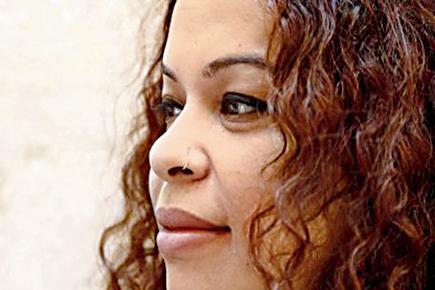If the dead can hear the living talk about them, I wonder what they’re thinking. You may have noticed how people often speak of the deceased as if they shared a very personal relationship

Paromita Vohra
 If the dead can hear the living talk about them, I wonder what they’re thinking. You may have noticed how people often speak of the deceased as if they shared a very personal relationship.
If the dead can hear the living talk about them, I wonder what they’re thinking. You may have noticed how people often speak of the deceased as if they shared a very personal relationship.
ADVERTISEMENT
The story grants the storyteller a kind of centrality and importance through association with the deceased, who have no control over how this these versions portray them.
I’ve wondered about this as public discussion in the last few weeks has revolved around the figures of two dead women.
One, gang-raped and murdered, called the Delhi gang-rape victim, eventually immortalised as Nirbhaya.

Suzette Jordan. Pic/PTI
The other, gang-raped and alive, hid neither her identity — Suzette Jordan — nor the difficulties of recovering from sexual violence that makes a victim of you and a tendentious trial process that re-does it. Being celebrated in activist circles did not make her journey for justice smoother, nor make her a widely honoured figure. Media and regular folks never turned her into a gutsy poster girl in life.
Once she died, (of encephalitis) words were spoken sometimes in tones of tragedy. Some words made circular shapes of outrage and, fuelled more postures of outrage and anger.
People began to say things like “she died for us” as they have often done for Jyoti Pande/Nirbhaya. In this way different groups made these women not heroes so much as martyrs.
And martyrs are swiftly turned into saints, their lives retold as idealised parables. In doing this we not only falsify their lives but also deny their suffering. We start generating ideas of the kind of womanhood worth defending. Other narratives that don’t fit this victim-hero-martyr trajectory start to fall through the cracks — Dalit women who are routinely raped, mutilated and murdered, custodial rape victims, girls of all classes in homes and offices who live with incestuous abuse or continuous harassment, eviscerated tourist bodies in tiny news items.
Her parents wanted the government fund instated for victims of sexual violence, to be named Jyoti, after her. Instead it was named Nirbhaya, an ideal who helped us remember righteous indignation, but made us forget that Jyoti was an ordinary girl and her rape was one of many brutal crimes that must be spoken of. The exceptionalism of the martyr myth obscures the complex realities of sexual violence Some words have stood out from this chorus, which should reshape our understanding and discussions. In a column from September 2013, the women’s rights lawyer Flavia Agnes wrote: “The name “Nirbhaya”, the one without fear, itself glosses over the death-like fear that must have engulfed her in those moments before she passed out, awaiting rescue by the roadside. She was not Nirbhaya, the fearless one, the modern Jhansi ki Rani! She was just an ordinary girl, taking a bus ride one evening with a male friend, not anticipating what was in store for her.”
Suzette Jordan’s daughter, Rhea, wrote an essay about her while she was alive, where she wrote of her mom: “She had her bad days, never completed her education, she’d drink, she’d smoke, she’d sometimes get into my clothes too, she had 21 tattoos and a whole lot of scars from mutilation…she never had a permanent job. But my mother was one of a kind. She taught me to believe in myself...she learned from her mistakes, even though she made one too many of them.”
Remembering them as ordinary women, these words remind us that these women did not want to die for us. They wanted to live for themselves, as themselves. Those are the myriad destinies and comradeships we need to build — of mortals, not martyrs.
Paromita Vohra is an award-winning Mumbai-based filmmaker, writer and curator working with fiction and non-fiction. Reach her at www.parodevi.com.
The views expressed in this column are the individual’s and don’t represent those of the paper.
 Subscribe today by clicking the link and stay updated with the latest news!" Click here!
Subscribe today by clicking the link and stay updated with the latest news!" Click here!






